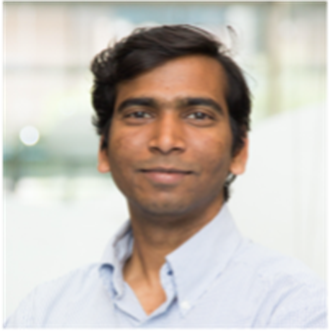Date
Location
Research 1, R1-101
Description
Crystalline materials have driven the microelectronics revolution, e.g. zone refinement produced purest crystals paving the way for the development of the transistor. Controlling defects in crystals are crucial to realize the full potential materials for technological advancement, e.g. for optimal doping of materials for laser action. More recently, the development of high-quality crystalline materials with multifunctional properties can lead to the next technological revolution. Topological materials are a new class of materials that display unusual properties such as the quantum spin Hall-effect, linear magnetoresistance, unconventional superconductivity, etc. [1,2]. These materials provide a playground for the observation of new physics phenomena such as chiral anomaly and could lead to the development of next-generation quantum devices [3]. However, it is challenging to develop these materials with ultra-high quality. In this talk, I will discuss the development and characterization of high-quality crystals of topological materials. I will also talk about the challenges in quantum information processing materials and how these could be tackled with new kinds of growth-enabled controls.
Biography: Dr. Satya completed his PhD degree from the Department of Physics Astrophysics, Delhi University, and National Physical Laboratory, India in 2013. In his PhD research, he worked on the growth nonlinear optical crystals, including of LiNbO3 and studied a defects-properties relationship. Dr. Kushwaha worked as a Guest researcher at Humboldt University of Berlin – Physics Department. He worked as a Postdoc with Prof. Cava at Princeton University and worked on the development and characterization of Topological insulators and semimetals (Bi1.1Sb0.9TeS, Na3Bi, GdPtBi, etc.). In 2018, Dr. Satya was awarded the LDRD Postdoctoral Fellowship, enabling him to conduct research at Los Alamos National Laboratory. At Los Alamos, he utilized the pulsed-magnetic field facility of the National High Magnetic Field Laboratory (NHMFL) to investigate strongly correlated topological Kondo Insulators, such as Ce3Bi4Pd4 and YbB12, under intense magnetic fields.
Currently, Dr. Satya holds the position of Associate Research Scientist at Johns Hopkins University, where he also serves as the Associate Director of the PARADIM – Bulk Growth Facility. PARADIM, an NSF-Funded user facility, and Dr. Satya's directs its bulk growth facility research activities. Dr. Satya is a member of a materials thrust team of Co-design Center for Quantum Advantage (C2QA), and his ongoing research focuses on the design and development of materials for quantum information processing applications. He has a close collaboration with several institutes, including Princeton University, CalTech, ANL, BNL, PNNL, LANL, etc.
Presenter

Satya Kushwaha, Ph.D.
Department of Physics & Astronomy
John Hopkins University
Baltimore, Maryland
Contact
Debashis Chanda NanoScience Technology Center Debashis.Chanda@ucf.edu